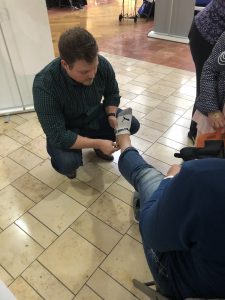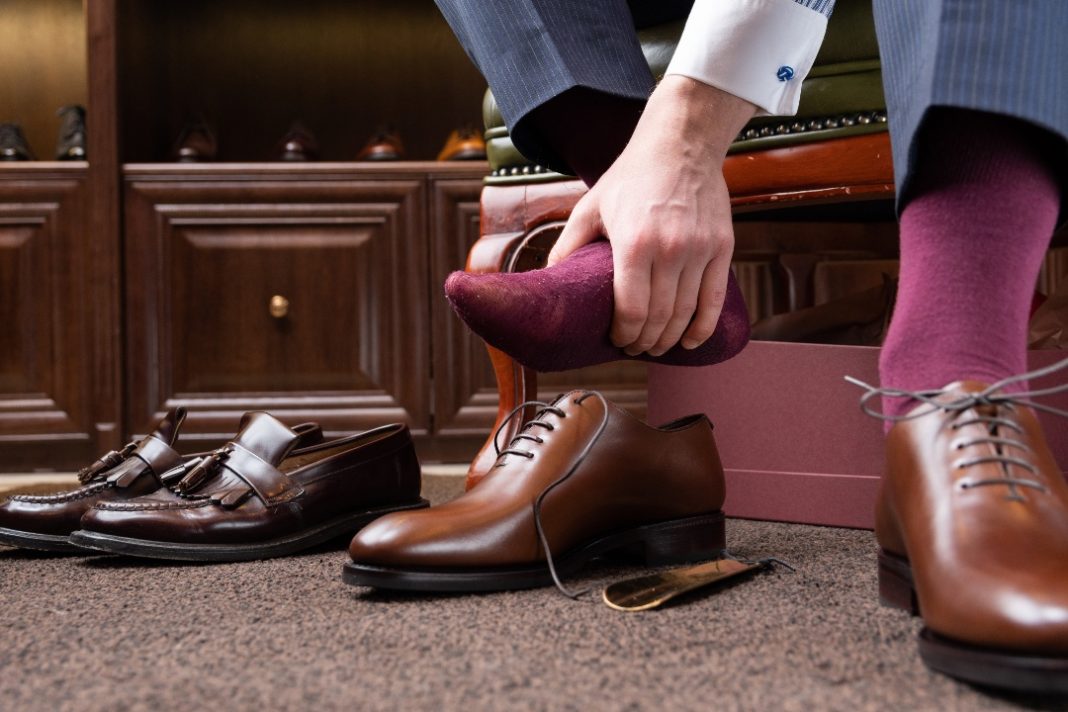Whether its breathing in the fresh air on a hiking trail, completing tasks at work, or exploring the local attractions on a daycation, a pair of healthy feet makes all the difference. At Foot & Ankle Surgical Associates (FASA), seven providers across the South Sound use both surgical and non-invasive treatments to help patients put their best foot forward. As a means of pain management and injury prevention, orthotics are a common solution to many chronic foot conditions.

Helping to protect the foot from pressure points on the ball, heel or arch, orthotics are shoe inserts that can help make everyday activities, like walking or standing, more comfortable. Custom orthotics can also help cushion the foot, absorb shock, or change a patient’s walking style if their current gait is causing them pain.
Orthotics are available over the counter, but can also be custom cast by a FASA provider to fit a patient’s particular foot shape and address their specific foot condition. Orthotics can be inserted into a vast range of footwear, including casual and dress shoes. Not just for everyday footwear, though, orthotics can also be placed inside athletic shoes to help reduce foot pain during workouts.
“Custom orthotics help to distribute the weight of your foot evenly across,” explains Dr. Adam Saleh, a provider at FASA’s Tumwater Clinic. “People who have flat feet or higher arches tend to have concentrated areas of pressure, so the point of orthotics is to alleviate it and make the weight even across the course of your foot.”
These custom inserts can also be made to treat the symptoms of multiple foot conditions, including chronic heel pain, tendonitis or flat foot deformities in young children. Patients who are eligible for bunion or Achilles tendon surgery may also seek out orthotics.
“If you need to have surgery, but you’re not sure about recovery time, orthotics may be a good way to go,” explains Saleh. “They can alleviate your pain while you’re getting ready to have surgery.”
Saleh says that orthotics may also be recommended to pediatric patients who are at risk for hereditary foot conditions, as a preventative measure.

“One thing I usually tell my patients, is if you have a certain deformity, it’s very likely your children might have it too,” says Saleh. “It’s smart to get a pair of inserts ahead of time so that they don’t end up in that position. It’s very preventative in the children’s case.”
No two pairs of custom orthotics are the same, since they are created from molds of the patient’s own feet. Patients interested in orthotics will usually undergo a series of tests, including x-rays, to assess the condition of their feet prior to fitting. To fit orthotics to a patient’s unique foot shape, FASA providers photograph each foot using a 3-D camera and will then use those photographs to create a 3-D mold.
Custom orthotics are often split into two separate categories, functional and accommodative. Comprised of a sturdier material, functional orthotics are made of components, like plastic or carbon fiber. Correcting a patient’s walking style, functional orthotics help to reduce leg and back pain. For patients with conditions like diabetes or arthritis, accommodative orthotics are made of softer components that can help to reduce pressure points on the feet.

Since custom orthotics can be a means of injury prevention and pain management, many insurance plans will cover the cost of orthotic fitting and production. And, as we are nearing the end of the year, the FASA team recommends that patients check with their health insurance company, to see if their deductible is met. If so, it’s a good time to use a wide range of services at FASA, including getting custom orthotics.
From custom orthotics to physical therapy, there are many different services available at FASA that could be a first step to an improved quality of life. Because many patients have already met their insurance deductible, they can save money by taking advantage of potentially costly services before the benefits expire at the end of the year.
Invested in the well-being of patients, many FASA locations now offer shorter waiting times for appointments. Often, patients can be seen within 24 hours, depending on their insurance plan. To learn more about custom orthotics, additional FASA services or to schedule an appointment, visit the Foot & Ankle Surgical Associates website.
Sponsored




















































